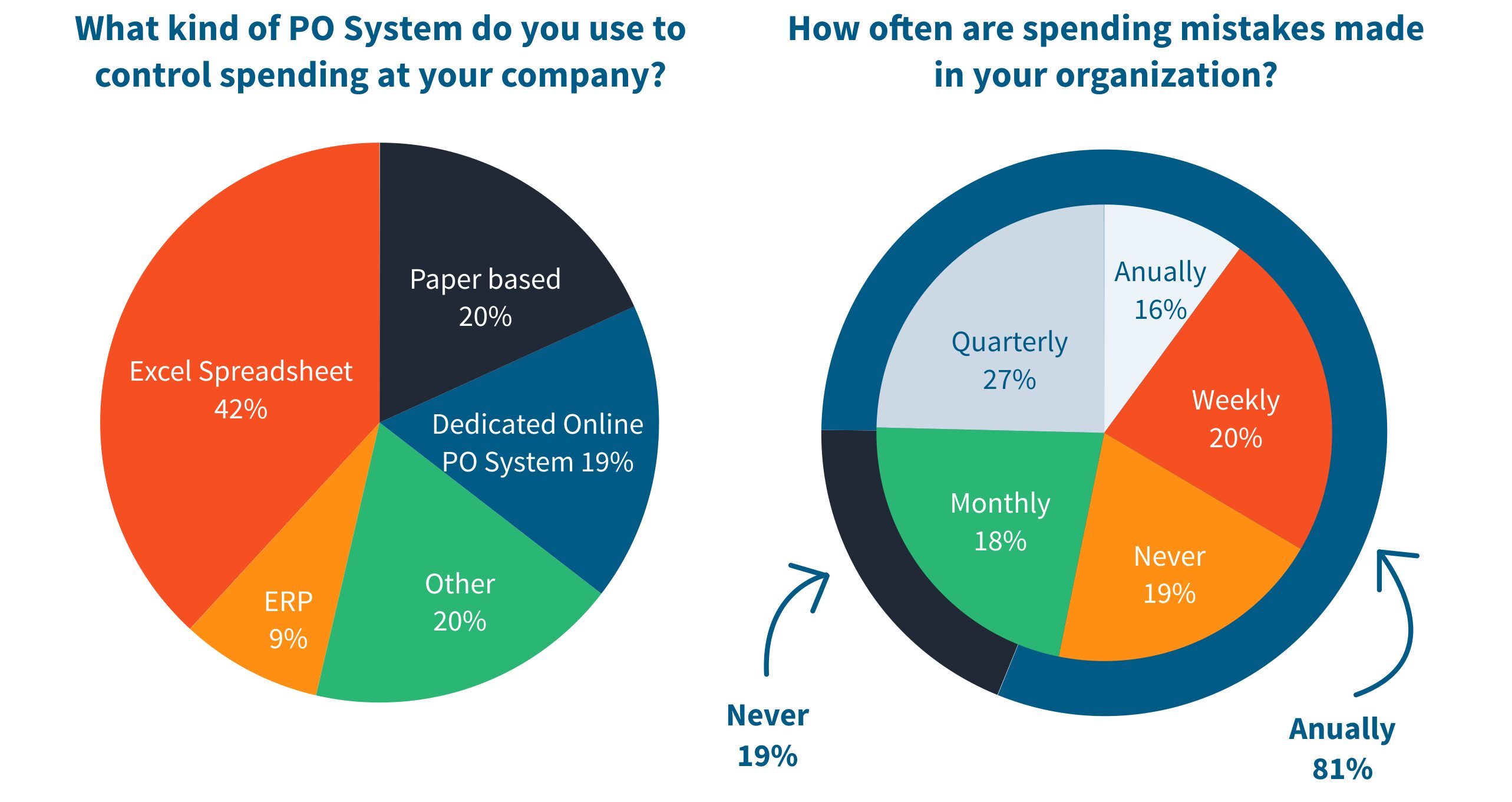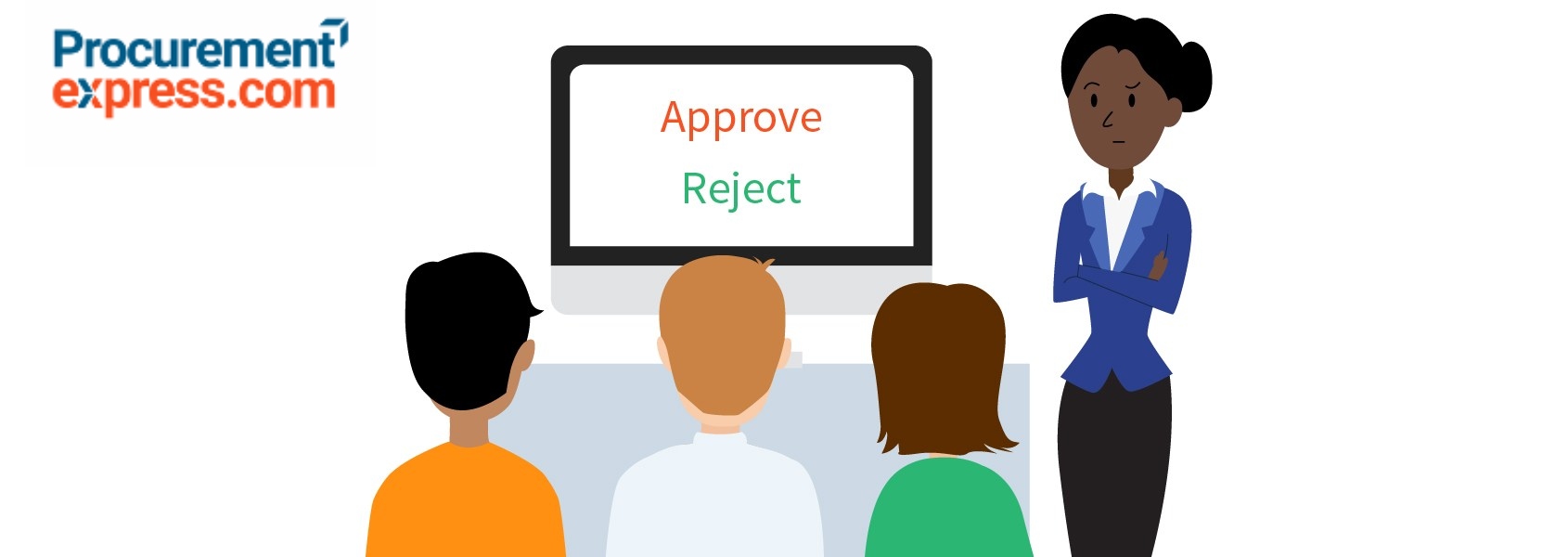 Purchase orders are an important tool that businesses should use to ensure spend stays within budget. Without purchase orders tracking expenses is more difficult, prone to errors and validating delivery reports becomes a nightmare.
Purchase orders are an important tool that businesses should use to ensure spend stays within budget. Without purchase orders tracking expenses is more difficult, prone to errors and validating delivery reports becomes a nightmare.
As an owner of a small business, you may think that your business doesn’t need to use purchase orders. But purchase orders provide value even at the small business level. In fact, they may be even more important, and I‘m going to share with you why your business needs to use purchase orders. Imagine phoning a vendor to send 5 bags of cement and agreeing on a certain price, but upon delivery – the vendor charges you more! A purchase order would rescue you by proving the vendor wrong and you avoid paying a higher price.
Or suppose you return from a business trip and start processing a backlog of paperwork, including paying your staff. You open your laptop, log into your bank account, and BOOM! There’s not enough money! Without purchase orders for validation, duplicate payments have been issued to vendors. Your company would not be in this position if it was using automated purchase orders with automated tracking.
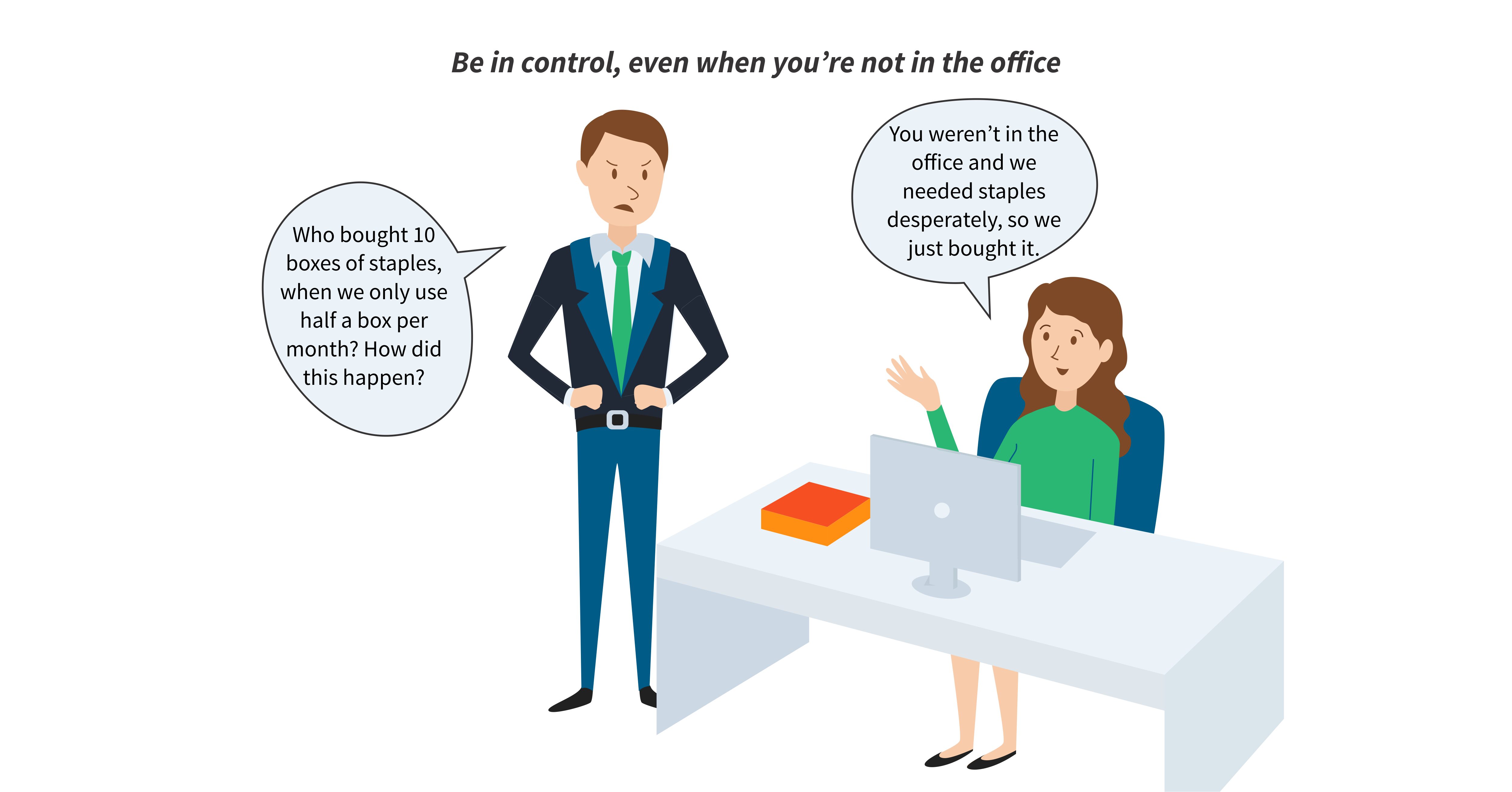 Albert Einstein once said: “If I were given one hour to save the planet, I would spend 59 minutes defining the problem and one minute resolving it.” Einstein recognized the need to look at the “cause” of problems, not just how to solve them. In this short article, I can show you in minutes how weak management of your purchases and spending can impact your cashflow, and what you can do about it.
Albert Einstein once said: “If I were given one hour to save the planet, I would spend 59 minutes defining the problem and one minute resolving it.” Einstein recognized the need to look at the “cause” of problems, not just how to solve them. In this short article, I can show you in minutes how weak management of your purchases and spending can impact your cashflow, and what you can do about it.
A study enlisted by Procurementexpress.com reveals how using manual processes to manage spend, such as paper documents or Excel spreadsheets, increases spending mistakes. The study also found that:
- Almost 42% of businesses use spreadsheets to track their spending.
- More than 80% of businesses make yearly spending mistakes that can be easily prevented by using electronic Purchase Order software

Plus, according to Corp! Magazine, 82% of companies still spend billions on paper.
Using manual processes without purchase orders (like Excel spreadsheets), puts your company finances at risk because you cannot:
- Monitor your expenses accurately and timely
- Prevent money-losing mistakes
- Stay within your budgets

Food for thought:
On every continent on this planet, nearly 4 billion trees or 35 percent of the total trees are being used in the paper industry. It can be said that approximately, we consume about 300 million tons of paper each year.
Feeling helpless? Rest assured…you aren’t!
Grab a cup of coffee and let me show you how to ensure you are in the driver’s seat of your bank account (and saving trees).
First things first…you may be asking yourself: “Why change? Maybe I just need to be more careful? Conduct more supervision?” But let me ask you this – do you really have time to micromanage the purchasing process manually? By implementing an automated purchasing process with checks and balances – you can reduce the risk of mistakes, reduce the time needed to monitor spending, protect your budget, protect your bank account and your business, and do it from any device, anywhere. Best of all, efficient practices in purchasing aren’t complicated. Let’s look at the basic steps.
Step 1 starts with the use of requisitions – or a request to purchase something, sent to a member of your business (usually management) for approval.
Step 2 is when the requisition gets approved to create a purchase order that documents the details of the purchase agreement between buyer and seller, and assigns a unique identifier number (hereafter known as the PO number). The PO is then sent to the supplier and acts as a purchasing contract.
Step 3 validates the receipt and quality of the purchase – did the buyer receive what they purchased based on the description in the purchase order?
Finally, Step 4 is payment for a satisfactory fulfillment of the purchase order and acknowledgment that the open purchase order is now closed as it has been fulfilled and paid. This prevents overpaying vendors because of the unique link between the requisition, the purchase order, and the payment. The transaction is now ready for recon.
It’s not rocket science. But let’s delve into the details a bit more…
What is a requisition and what is a purchase order?
Both a requisition and a purchase order are forms that document activity, but they have different levels of approval. A requisition (request for purchase) simply documents a request from someone to purchase something. A purchase order approves a request to purchase and initiates that request to a vendor.
The purchase order – or PO – is a document created when a requisition is approved. Suppose reception needs to buy stationery. The Receptionist will get a quotation from the supplier, complete a requisition for stationery and send it to a manager for approval. A good rule of thumb is to get at least 3 different quotes before a requisition is created This way the supplier can’t say: I’m terribly sorry, the order cannot be completed, therefore the purchase order must be canceled.” later on.
Requisition
After the requisition is approved, the requisition becomes the PO with a unique PO number – that documents the purchase request. The issuing of a purchase order creates a formal agreement between your company and the supplier that governs and documents the purchase. Your order will be processed and shipped to you. The delivery note attached to the goods should be signed once you have received the goods (and you’re pleased with the condition) and then attached to the PO. The purchase order has been fulfilled.
Generally, all purchase orders should reflect the following details for each item being purchased:
- The name of the product and/or service
- The quantity of each product and/or service
- The price of each unit of product and/or service
- Any additional terms for the sale, such as discounts, etc
- A PO number
- The projected delivery schedule
- The time frame for payment
- The requester and approver names
One of the benefits of using automated purchase order software is that Finance can track orders, access reports and process payments much faster and easier. There’s no need to spend hours ferreting among paper files or poring over cumbersome spreadsheets. With just one click, you can access all the needed information.
Who creates a purchase order?
Generally, in larger companies, the Purchasing Department creates orders for all departments, after receiving the request. However, this is not the case with small and medium-sized businesses or SMBs. In SMBs, you are likely to find the requester tasked with creating the PO on location (construction site, the office, event location, etc.)..
Creating a purchase order should not be complicated – whether it is in paper form or on a computer. In fact, if you’re using good software, anyone capable of using a computer can create a purchase order. It can be intimidating to switch from paper to software, but the software simply provides an electronic form to ensure spend accountability and efficiency, it’s still easy to do. Now you can track activity, status and prevent errors. User-friendly PO software can make creating and using purchase orders, fun and easy. Purchase order software provides a stronger level of security by allowing you to assign employees a user role, based on their level of authority.
What is a purchase order number?
Every purchase order has a unique identifier which is a key reference number – but can be any combination of characters. The PO number links all the purchasing phases together for tracking – from receipt and approval of a requisition to creating a purchase order, to supplier invoice, to delivery and final approval of goods or services received.
Is a purchase order a legal contract?
As part of the checks and balances, most companies have specific managers who approve purchases and purchase orders related to their departments, before they are sent to the supplier.
A purchase order is a legal contract between a buyer and seller; however, it cannot be binding until the purchase order is approved by someone in your company management.
What is the difference between purchase orders and invoices?
A purchase order is a document that you send to suppliers to order products or services. The supplier, in turn, sends you an invoice that requests payment. An invoice will state the amount of money owed, the due date, and any available discounts (for example early payment).
Who approves a purchase order?
A challenge experienced by most companies still using manual processes is that purchase orders cannot be issued until the authorizing person physically signs them. In many cases, the approver is very busy, frequently in meetings or traveling, and clinching deals.
The approver may not be available to approve orders fast enough. The manual process creates delays for employees and a backlog of approvals for the executive on his/her return.
This time problem is solved when your company uses electronic, cloud-based purchase order software like Procurementexpress.com. With cloud-based software, approving orders becomes easy (and fast) – approvers can approve anytime, anywhere by using their smartphones, tablets or laptops – and no backlog to deal with upon their return!
The advantages of using Purchase Order software like Procurementexpress.com
As the owner of a business, you juggle many duties because you understand that the growth of your business depends on how well you sell your products and manage your team and company’s spend. For this reason, you’ve made approving purchases, one of your main responsibilities. But as your business grows, manual processes move too slowly, clog up operations and reduce the business’ ability to work efficiently. A growing business will find spend management insanely difficult when using manual processes, like paper or Excel.
You’ll waste time that you (or your team) don’t have because you are running a growing business! So I am going to share with you how electronic purchase order software can revolutionize your purchasing process by making it a lot less challenging, a lot faster and a lot more accurate. That notebook you’ve been using and those piles of papers can be replaced by one electronic application that’ always up to date. You won’t ever have to go through filing cabinets or multiple Excel files every time you need a purchasing report. With one click, you can download a current purchasing report and print it immediately.
Purchase orders help you plan and control cashflow better
“If you don’t drive your business, you will be driven out of business.” – B. C. Forbes
According to PreferredCFO.com, 82% of small businesses fail because of poor cashflow management; plus, 2 of the 3 recommendations for managing cashflow involve managing spending. Efficient purchase order software enables businesses to create budgets, keep a close eye on the moolah going out, plan effectively and manage spending through accurate and timely reporting to avoid the risk of poor cashflow management. Purchase order software helps you to stay on top of your spend, especially when you use it with clear purchasing policies. For example, when the need for a purchase arises, policies are in place that describes the process and the rules for everyone. Planning your finances and protecting your cash in this way gives your business a competitive advantage.
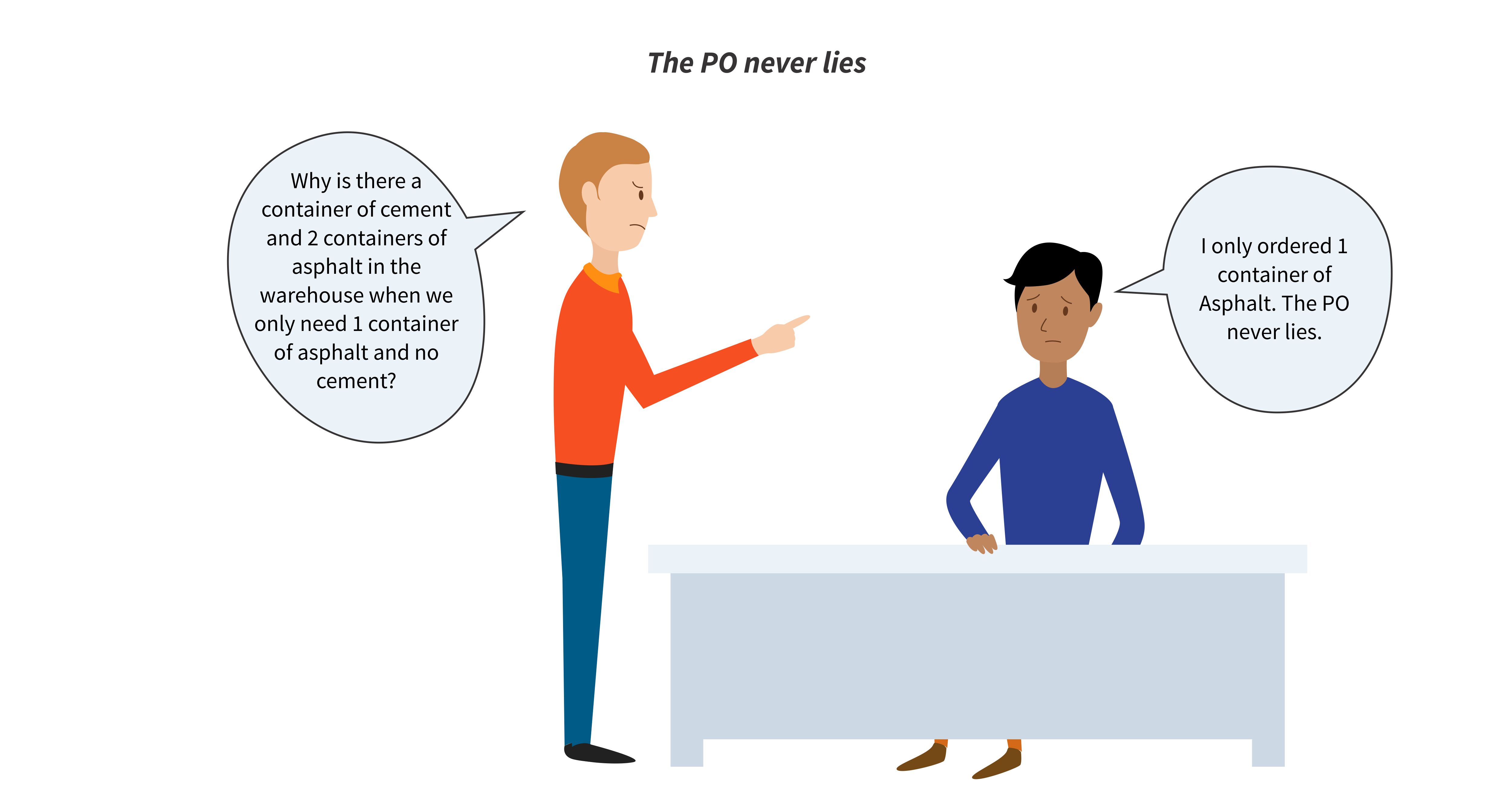
Delivery times will be greatly improved
Automating your purchases will not only help your company management, but your suppliers will benefit from easier processing and tracking (and faster delivery). Automation makes it easier for them to verify your order, assemble your goods and issue an invoice – saving you and them time and keeping operations running more efficiently.
When is a purchase order required?
Before you decide if your business needs to automate purchasing processes, take a moment to consider your volume of purchases. All businesses make purchases, but the frequency, volume, and type of purchases you make influence whether or not you need a more efficient system. For example, if you only make a few purchases quarterly – then your volume is small and can probably be handled by manual processes. Unless of course, your purchase approver is constantly traveling, making it difficult to secure approvals in a timely manner. Likewise, your approver might be available, but you’re making dozens of purchases per month, or your purchases are complex – manual processes might be a nightmare.
Now establish what your organization’s goals are. Is it transparency, spend control or just implementing approval rules? The more you clearly define your need, the greater the chances that you’ll solve your purchasing problems at the root – just like Einstein.
To ensure that you are making the right decision, ask your employees what they think are the current problems/bottlenecks. Their input is valuable, as they are on the frontlines every day.
What size company should be using a purchase order
Any business can benefit from using efficient purchase order software, irrespective of size. Purchase orders can be customized to suit your business needs and tailored to your business’ mission, size and structure.
Why is a purchase order important to a small business
Smaller businesses are often operated on shoestring budgets. The use of purchase orders can help entrepreneurs manage their spend more transparently and accurately, which translates into stronger cashflow management. Entrepreneurs can see their business flourish and grow stronger because:
- At a glance, they can see if they received what they ordered. (Excel spreadsheets and a pile of papers are not only painful but also time-consuming.)
- Purchase orders can reduce the risk of discrepancies, inaccurate deliveries, overpayments and internal fraud.
- Purchase orders help small and medium-sized businesses stay within budgets, plan better and control cashflow.
Let’s explore purchase order software
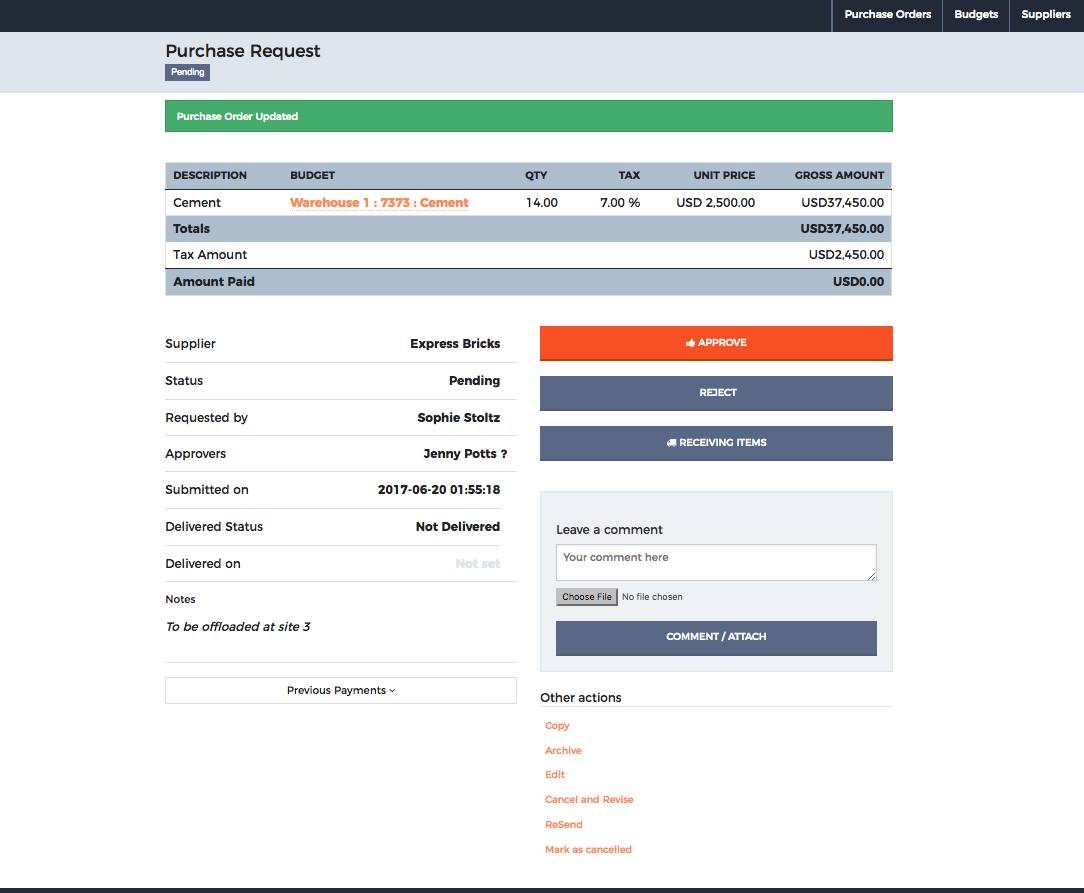
How does Purchase Order Software work? (The electronic process explained.)
Step 1
With user-friendly PO software like Procurementexpress.com, your employees log into the app or website, using their unique username and password to create a requisition. Top-right on the menu bar, click on “+New Purchase Order” button and choose the relevant department. Now all they have to do is fill in the form. Easy peasy!
Step 2
To fill in the form, first, choose the currency from the drop-down menu. Now choose supplier name, enter a description of the items, choose the related budget, enter the unit price, item quantities and sales tax, (if applicable). Save and send an electronic file (PDF) to the approver.
Step 3
Assigned approvers receive an instant notification in their email inbox. They can review the request, and choose to approve or reject the purchase order (or make an alternative suggestion). All from their device of choice.
Step 4
Once a purchase order is approved, simply press”Share this PO” to send to your supplier. The supplier processes your order and delivers to the address provided. You can mark full or partial deliveries with Rubbertamp.io, so be sure to inspect your delivered goods carefully.
Step 5
Finally, the supplier issues an invoice for payment. Add this invoice to the PO as supporting documentation. Accounting or Finance will mark this PO as paid (full or partial) when they have done so. Procurementexpress.com makes tracking orders and payments quite easy by allowing a purchase order report to be downloaded and/or printed on the go.
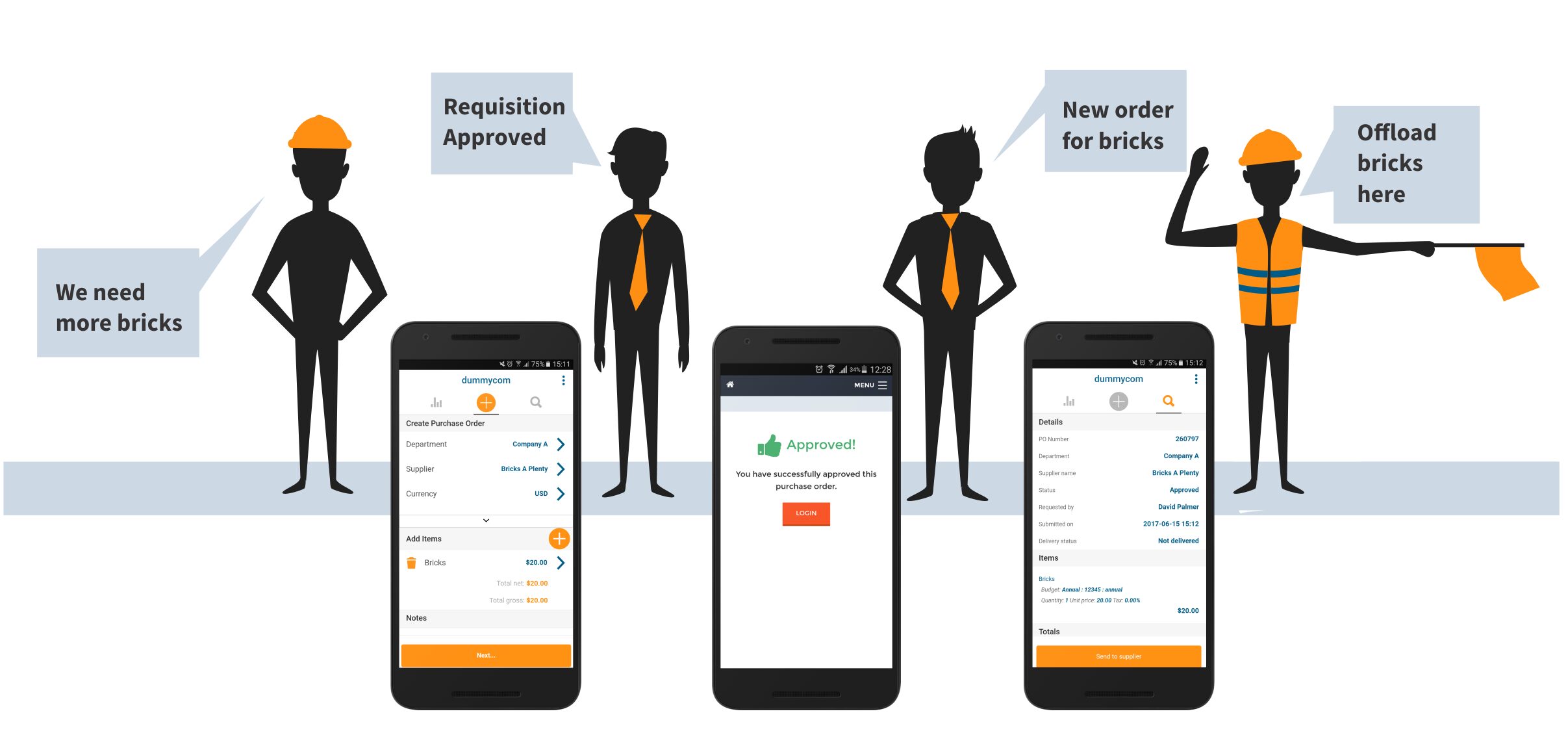
When should you implement automated Purchase Order Software?
There’s no right or wrong time for implementing purchase order software. If you feel your business needs stronger controls on spending, and want to see your business thrive, you’ll have some urgency to automate. This will not only help you track purchases a lot easier but will also nurture frugality within your company as it grows. I would recommend automated purchasing processes to any actively growing business. If you’re growing, you need control. Remember, it is never too late to adopt more efficient purchasing process.
Procurementexpress.com is the answer.
Procurementexpress.com is the fastest way to implement best practices in managing your cashflow by eliminating wasteful spending with the least amount of effort. You can get your whole team on board within minutes and access fantastic features that suit all your purchasing needs.
With Procurementexpress.com, you can load suppliers and products and view your PO history anytime. It’s customizable so you can capture info that is important to your company.
Purchase order automation speeds up the requisition process by giving you an instant view of budgets and reporting of purchases. This valuable insight allows decision makers to track, monitor and analyze business costs at the click of a button.
When your company uses efficient purchase order software, saving money becomes ridiculously easy.
When your company uses efficient purchase order software, saving money becomes ridiculously easy. Sign up for a free trial today!
 Don’t be the next victim of invoice fraud!
Don’t be the next victim of invoice fraud!


